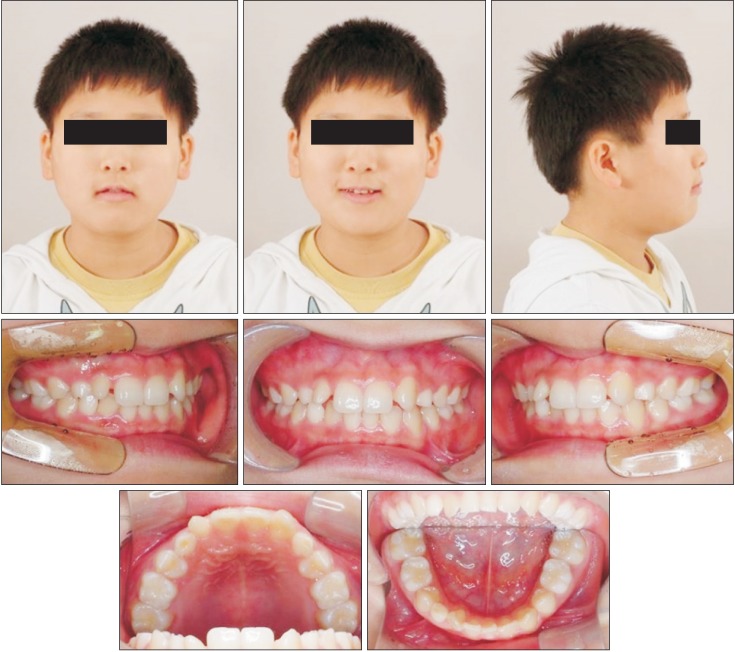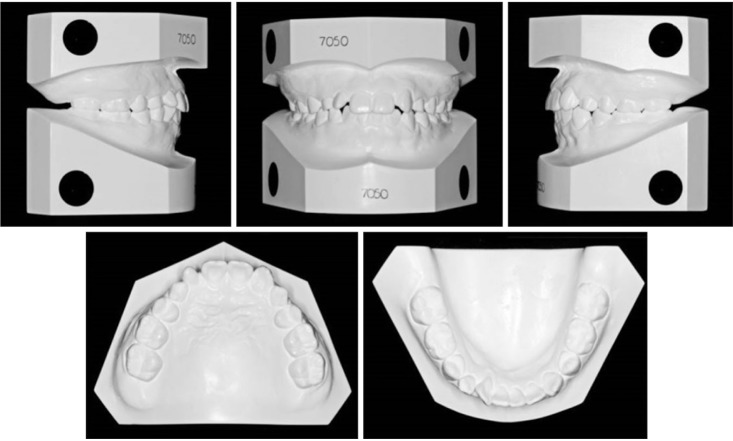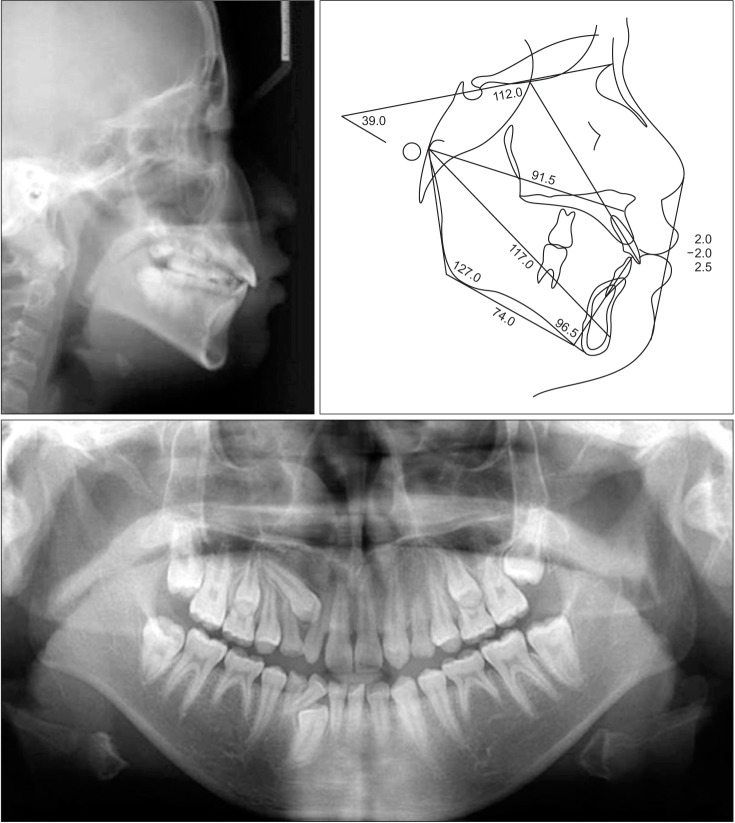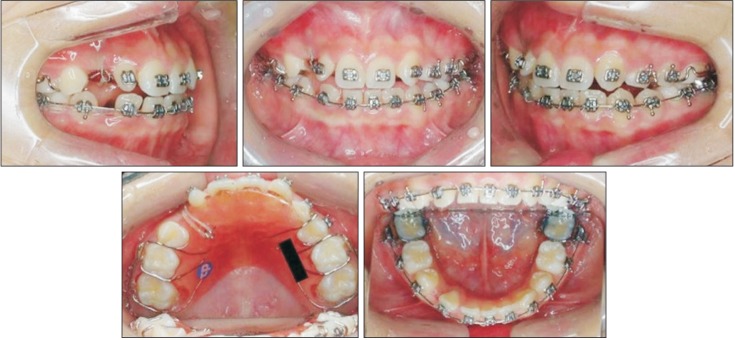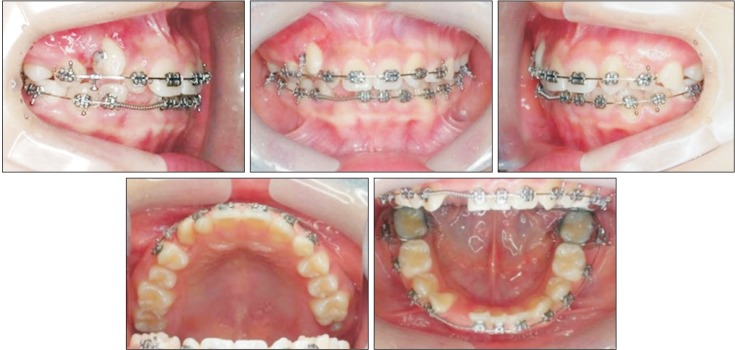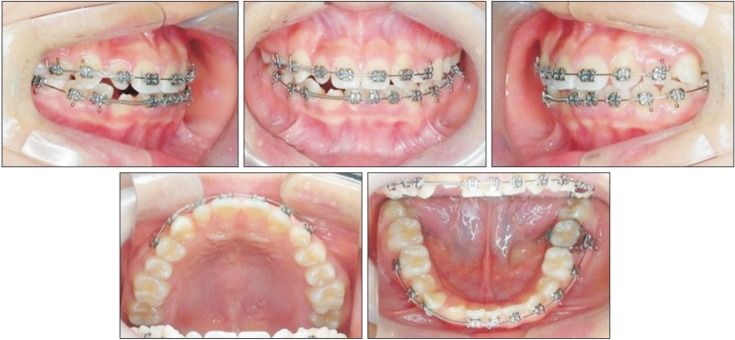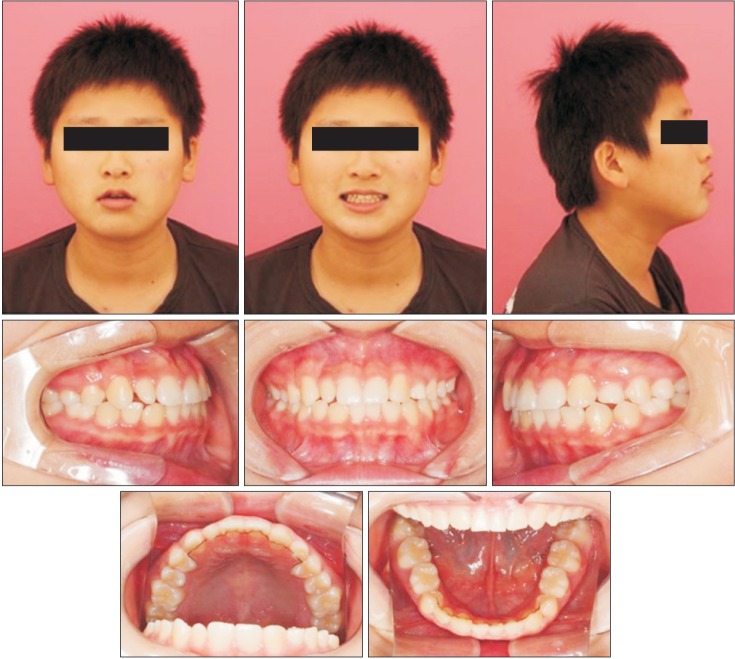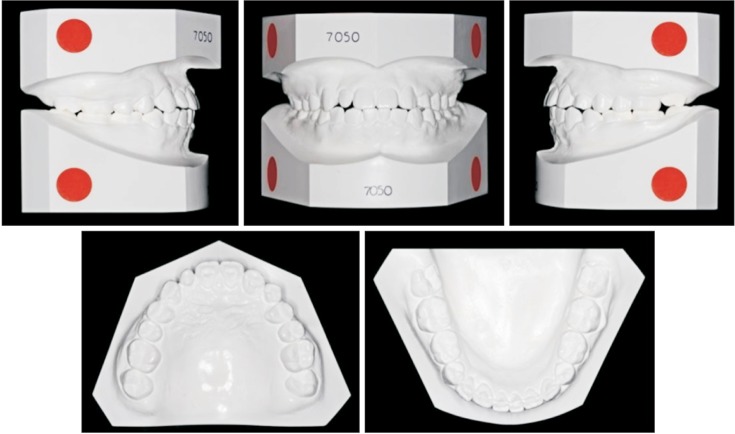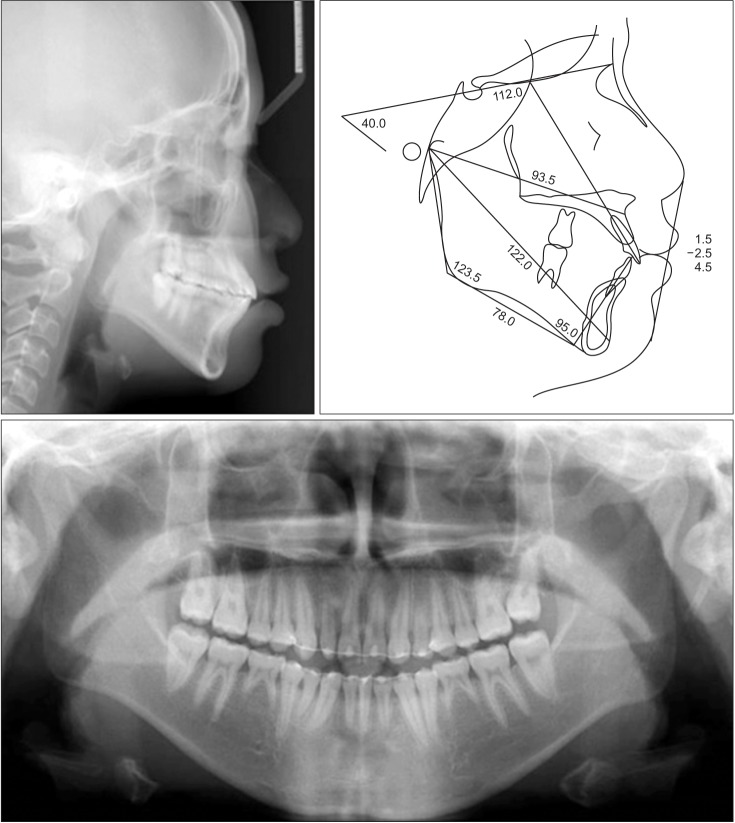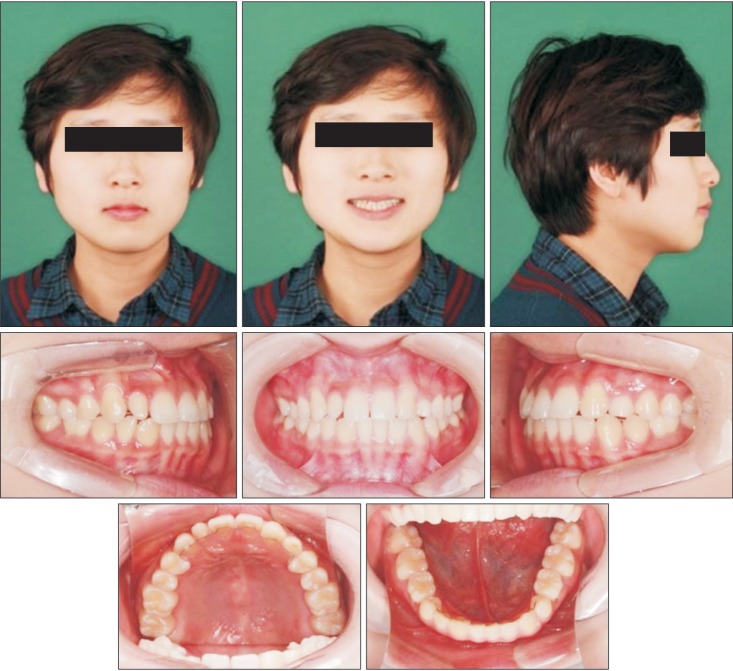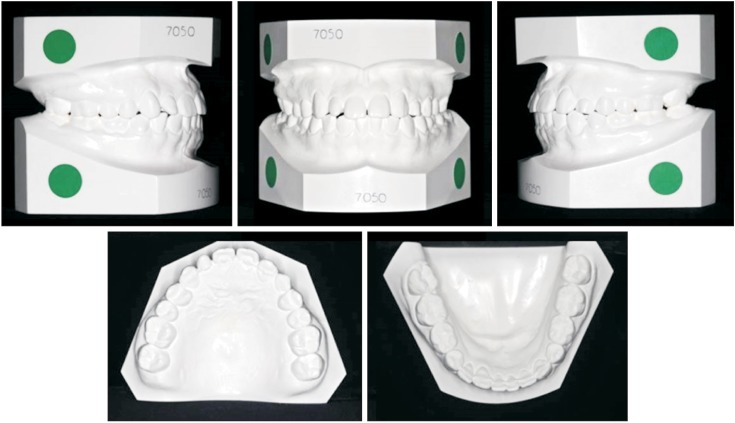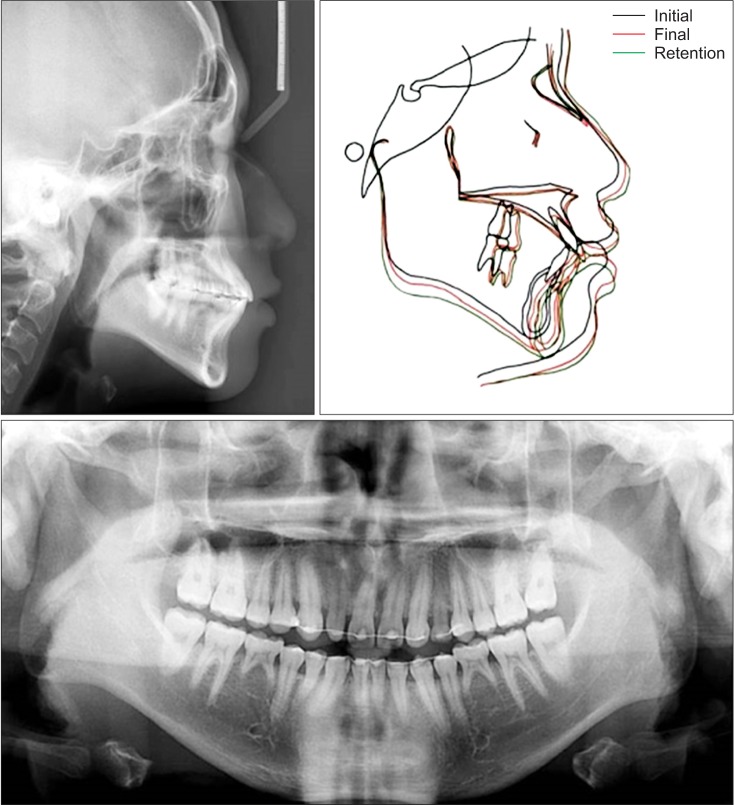Korean J Orthod.
2017 Sep;47(5):323-333. 10.4041/kjod.2017.47.5.323.
Long-term survival of retained deciduous mandibular second molars and maxillary canine incorporated into final occlusion
- Affiliations
-
- 1Department of Orthodontics, Gangnam Severance Dental Hospital, Institute of Craniofacial Deformity, College of Dentistry, Yonsei University, Seoul, Korea. khkim@yuhs.ac
- 2Department of Orthodontics, Institute of Craniofacial Deformity, College of Dentistry, Yonsei University, Seoul, Korea.
- KMID: 2389148
- DOI: http://doi.org/10.4041/kjod.2017.47.5.323
Abstract
- Orthodontic treatment of a complex case that involves retained deciduous mandibular second molars with missing permanent successors is challenging. Usually, congenitally missing teeth are manifested with other dental anomalies that further complicate orthodontic treatment, such as retained deciduous teeth, impactions, transpositions and peg-shaped lateral incisors. Even though the long term prognosis of the retained deciduous tooth is not fully predictable, if the teeth are in good condition, the patient and clinician may incline towards a decision to preserve the deciduous teeth as long as possible. This case report demonstrates that deciduous teeth, in this case the mandibular second molars and maxillary canine, can be incorporated into final occlusion with clinically stable long-term results.
Keyword
Figure
Reference
-
1. Polder BJ, Van't Hof MA, Van der Linden FP, Kuijpers-Jagtman AM. A meta-analysis of the prevalence of dental agenesis of permanent teeth. Community Dent Oral Epidemiol. 2004; 32:217–226. PMID: 15151692.
Article2. Larmour CJ, Mossey PA, Thind BS, Forgie AH, Stirrups DR. Hypodontia--a retrospective review of prevalence and etiology. Part I. Quintessence Int. 2005; 36:263–270. PMID: 15835422.3. Chung CJ, Han JH, Kim KH. The pattern and prevalence of hypodontia in Koreans. Oral Dis. 2008; 14:620–625. PMID: 18248591.
Article4. Baccetti T. A controlled study of associated dental anomalies. Angle Orthod. 1998; 68:267–274. PMID: 9622764.5. Peck S, Peck L, Kataja M. Prevalence of tooth agenesis and peg-shaped maxillary lateral incisor associated with palatally displaced canine (PDC) anomaly. Am J Orthod Dentofacial Orthop. 1996; 110:441–443. PMID: 8876497.
Article6. Ely NJ, Sherriff M, Cobourne MT. Dental transposition as a disorder of genetic origin. Eur J Orthod. 2006; 28:145–151. PMID: 16373452.
Article7. Gracco A, Siviero L, Perri A, Favero L, Stellini E. Orthodontic treatment of a transposed maxillary canine and first premolar in a young patient with Class III malocclusion. Korean J Orthod. 2015; 45:322–333. PMID: 26629478.
Article8. Kokich VG, Kokich VO. Congenitally missing mandibular second premolars: clinical options. Am J Orthod Dentofacial Orthop. 2006; 130:437–444. PMID: 17045142.
Article9. Fishman LS. Radiographic evaluation of skeletal maturation. A clinically oriented method based on hand-wrist films. Angle Orthod. 1982; 52:88–112. PMID: 6980608.10. Consolaro A. Orthodontic movement in deciduous teeth. Dental Press J Orthod. 2015; 20:16–19.
Article11. Kenworthy CR, Larson BE. Incorporating retained deciduous teeth in orthodontic therapy. Am J Orthod Dentofacial Orthop. 2001; 119:202–210. PMID: 11244413.
Article12. Haselden K, Hobkirk JA, Goodman JR, Jones SP, Hemmings KW. Root resorption in retained deciduous canine and molar teeth without permanent successors in patients with severe hypodontia. Int J Paediatr Dent. 2001; 11:171–178. PMID: 11484466.
Article13. Rune B, Sarnäs KV. Root resorption and submergence in retained deciduous second molars. A mixed-longitudinal study of 77 children with developmental absence of second premolars. Eur J Orthod. 1984; 6:123–131. PMID: 6587969.
Article14. Ith-Hansen K, Kjaer I. Persistence of deciduous molars in subjects with agenesis of the second premolars. Eur J Orthod. 2000; 22:239–243. PMID: 10920556.
Article15. Sletten DW, Smith BM, Southard KA, Casko JS, Southard TE. Retained deciduous mandibular molars in adults: a radiographic study of long-term changes. Am J Orthod Dentofacial Orthop. 2003; 124:625–630. PMID: 14666074.
Article16. Bjerklin K, Bennett J. The long-term survival of lower second primary molars in subjects with agenesis of the premolars. Eur J Orthod. 2000; 22:245–255. PMID: 10920557.
Article17. Hvaring CL, Øgaard B, Stenvik A, Birkeland K. The prognosis of retained primary molars without successors: infraocclusion, root resorption and restorations in 111 patients. Eur J Orthod. 2014; 36:26–30. PMID: 23314329.
Article18. Shimizu Y, Hosomichi J, Nakamura S, Ono T. Microcomputed tomography analysis of changes in the periodontal ligament and alveolar bone proper induced by occlusal hypofunction of rat molars. Korean J Orthod. 2014; 44:263–267. PMID: 25309866.
Article19. Kokich VG, Mathews DP. Surgical and orthodontic management of impacted teeth. Dent Clin North Am. 1993; 37:181–204. PMID: 8477864.20. Kokich VG. Surgical and orthodontic management of impacted maxillary canines. Am J Orthod Dentofacial Orthop. 2004; 126:278–283. PMID: 15356485.
Article21. Peck S, Peck L, Kataja M. Mandibular lateral incisorcanine transposition, concomitant dental anomalies, and genetic control. Angle Orthod. 1998; 68:455–466. PMID: 9770104.22. Javid B. Transmigration of impacted mandibular cuspids. Int J Oral Surg. 1985; 14:547–549. PMID: 3936805.
Article23. Shapira Y, Kuftinec MM, Stom D. Maxillary canine-lateral incisor transposition--orthodontic management. Am J Orthod Dentofacial Orthop. 1989; 95:439–444. PMID: 2718974.
Article
- Full Text Links
- Actions
-
Cited
- CITED
-
- Close
- Share
- Similar articles
-
- New prediction equations for the estimation of maxillary mandibular canine and premolar widths from mandibular incisors and mandibular first permanent molar widths: A digital model study
- Correlations between mesiodistal crown diameters of permanent teeth
- The Location of Molar Furcation in Korean
- Non-metric Dental Traits in Koreans and Its Racial Differences
- Assessment of Root and Root Canal Morphology of Human Primary Molars using CBCT

